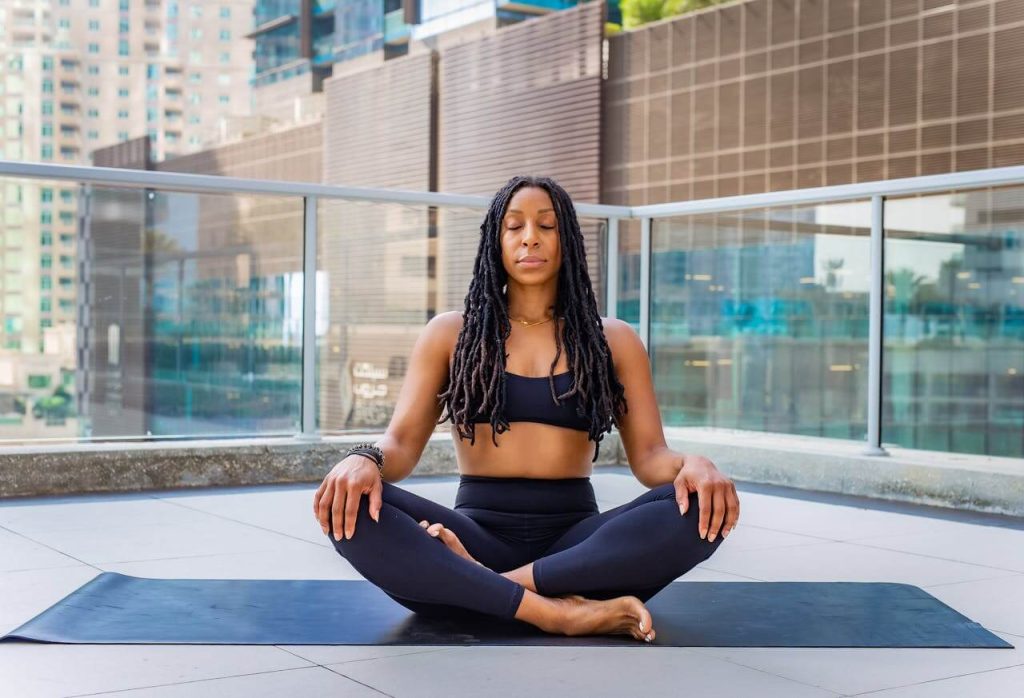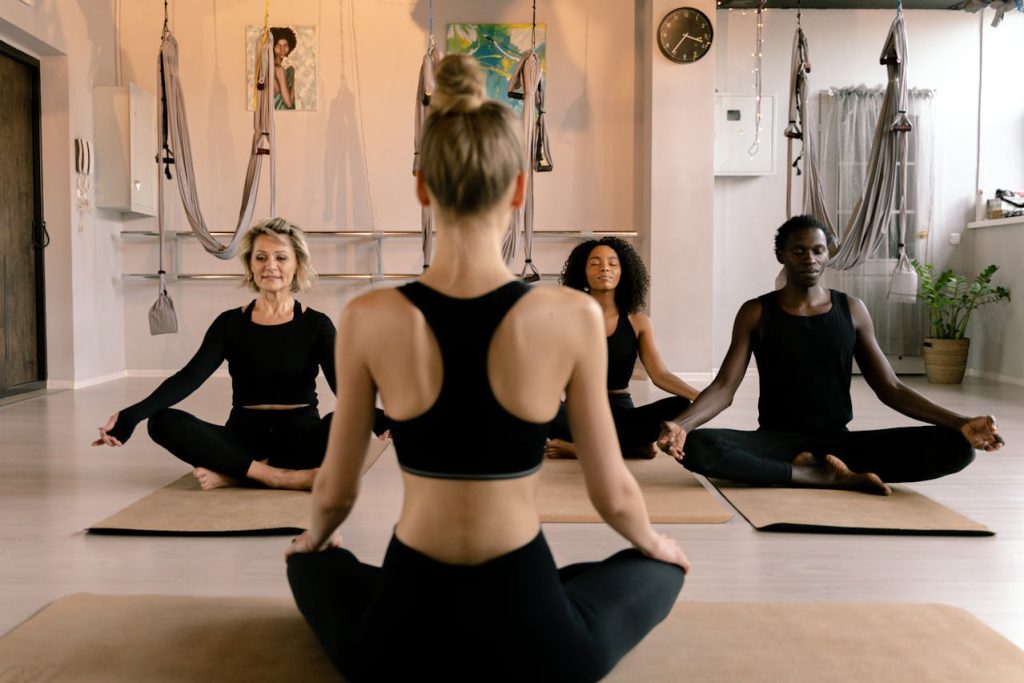Discover the best way to meditate with practical tips, techniques, and routines to enhance mindfulness, reduce stress, and improve mental clarity. Perfect for beginners and experienced meditators alike.
Overview
Meditation is more than just a relaxation technique—it’s a practice that nurtures mental clarity, emotional stability, and overall well-being. In this guide, you’ll learn the best way to meditate, step-by-step techniques, and actionable tips to incorporate meditation into your daily routine. Whether you’re a beginner or an experienced practitioner, this post will help you refine your practice and experience its full benefits.
Introduction: Why Meditation Matters
Meditation has been practiced for thousands of years across cultures, helping individuals manage stress, increase focus, and deepen self-awareness. Today, with our fast-paced lives, finding the best way to meditate can significantly improve mental health and personal growth.
Modern science also supports meditation’s benefits, showing improvements in stress reduction, anxiety management, emotional regulation, and even physical health outcomes. But the key is consistency and using the techniques that work best for you.

Understanding the Best Way to Meditate
Finding the best way to meditate depends on your goals, lifestyle, and personal preferences. Here are some essential principles to guide your meditation practice:
- Consistency over duration: Meditating for 10-15 minutes daily is more effective than long sessions done irregularly.
- Comfortable posture: You don’t need to sit cross-legged on the floor—use a chair, cushion, or even lie down if comfortable.
- Quiet environment: Choose a calm, distraction-free space to help focus your mind.
- Mindset: Approach meditation with patience and openness. Avoid judging your thoughts.
Different Types of Meditation Practices
1. Mindfulness Meditation
Mindfulness meditation focuses on staying present and fully aware of your thoughts, feelings, and surroundings.
How to practice:
- Sit comfortably with your back straight.
- Focus on your breath or bodily sensations.
- Observe thoughts without judgment and gently return to your breath if distracted.
Mindfulness meditation is widely regarded as one of the best ways to meditate for stress relief and emotional balance.
2. Guided Meditation
Guided meditation involves following instructions from an instructor, either in person or via audio/video recordings.
Benefits:
- Great for beginners who need structure.
- Helps reduce anxiety and increase focus.
- Can incorporate visualization for personal growth or relaxation.
3. Transcendental Meditation (TM)
TM uses silent mantra repetition to promote deep relaxation and awareness.
Tips for TM:
- Practice 20 minutes twice daily.
- Sit in a comfortable position with closed eyes.
- Repeat a mantra silently and return to it if distracted.
Transcendental meditation is often cited as one of the most effective approaches for achieving deep mental calm.
4. Breath-Focused Meditation
This method centers entirely on conscious breathing patterns.
Steps:
- Sit comfortably with a straight spine.
- Take slow, deep breaths, noticing inhalation and exhalation.
- Count breaths if necessary to improve focus.
Breath meditation is simple, portable, and one of the best ways to meditate in stressful or busy environments.
5. Body Scan Meditation
Body scan meditation emphasizes awareness of different body parts to release tension.
How to practice:
- Lie down comfortably.
- Slowly focus attention on each body part from head to toes.
- Notice sensations without judgment.
This technique is ideal for stress relief, improving sleep, and cultivating relaxation.

Step-by-Step Guide to the Best Way to Meditate
- Choose Your Meditation Style
Decide whether you prefer mindfulness, guided, breath-focused, or body scan meditation. You can experiment to find what suits you best. - Set a Time
Schedule a consistent time daily—morning, afternoon, or evening. Start with 5–10 minutes and gradually increase. - Find a Quiet Space
Pick a calm environment where you can sit comfortably without interruptions. - Adopt a Comfortable Posture
Sit with a straight back, relaxed shoulders, and hands resting naturally. - Focus on Your Breath or Mantra
Keep your attention on your chosen focal point, whether breath, mantra, or visualization. - Gently Handle Distractions
Thoughts will arise—acknowledge them without judgment and return to your focus. - End Mindfully
Slowly open your eyes and take a few moments to notice your mental state before resuming activities.
Tips for Meditating Successfully
- Use a Timer: Prevent checking the clock by setting a gentle timer.
- Stay Consistent: Daily practice, even 5 minutes, is more effective than occasional long sessions.
- Combine with Mindful Activities: Walks, eating, or stretching can be mindful practices.
- Keep a Meditation Journal: Track experiences, challenges, and progress.
- Practice Patience: Meditation benefits build over time; don’t rush or judge results.
Common Challenges and How to Overcome Them
- Restless Mind
- Solution: Focus on your breath and gently redirect your thoughts.
- Time Constraints
- Solution: Start with short sessions of 5–10 minutes.
- Physical Discomfort
- Solution: Adjust posture or use cushions/chairs for comfort.
- Impatience
- Solution: Accept meditation as a skill that improves gradually.

Benefits of Finding the Best Way to Meditate
- Reduces stress and anxiety levels.
- Enhances focus, concentration, and mental clarity.
- Improves emotional regulation and resilience.
- Promotes better sleep and relaxation.
- Boosts overall well-being and self-awareness.
By regularly practicing the best way to meditate, you can create a foundation for a calmer, more focused, and more mindful life.
How Mindfulness Meditation Hub Can Help
At Mindfulness Meditation Hub, we provide guided meditation sessions, expert tips, and curated resources to help you find the best way to meditate that fits your lifestyle. Whether you’re a beginner or an experienced meditator, our platform offers:
- Guided audio and video meditations.
- Step-by-step meditation routines.
- Mindfulness exercises for daily life.
- Expert advice on improving mental clarity and focus.
Our goal is to make meditation accessible, effective, and enjoyable for everyone.
Final Thought
Finding the best way to meditate is a personal journey. By understanding different meditation techniques, establishing a consistent routine, and using practical tips, anyone can experience profound benefits for the mind and body.
Start small, stay consistent, and use resources like Mindfulness Meditation Hub to guide your practice. Over time, meditation can become an essential part of your daily routine, promoting balance, focus, and inner peace.

